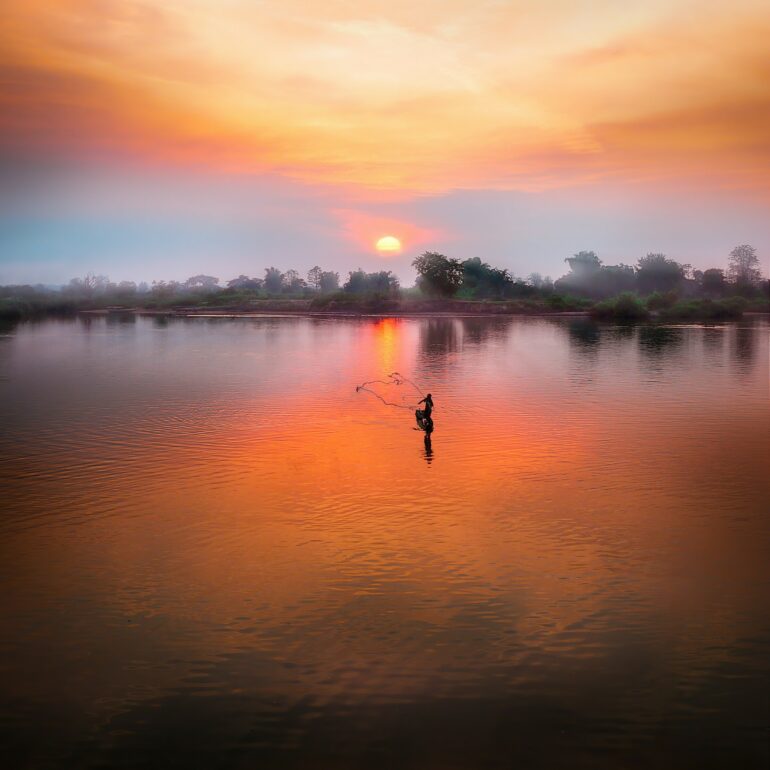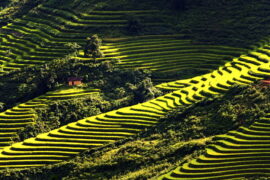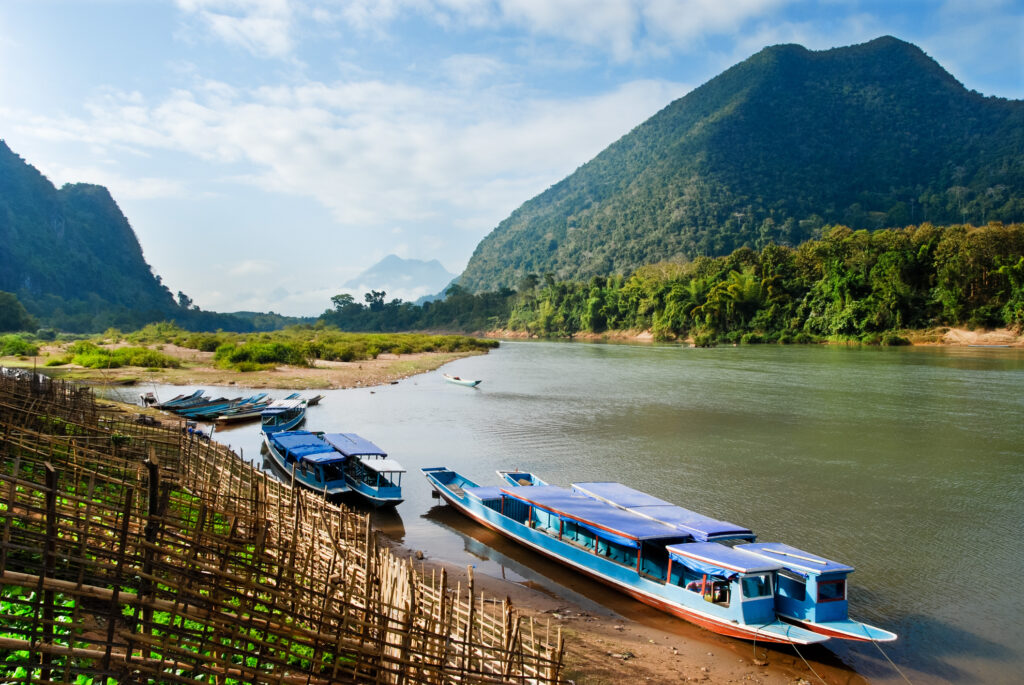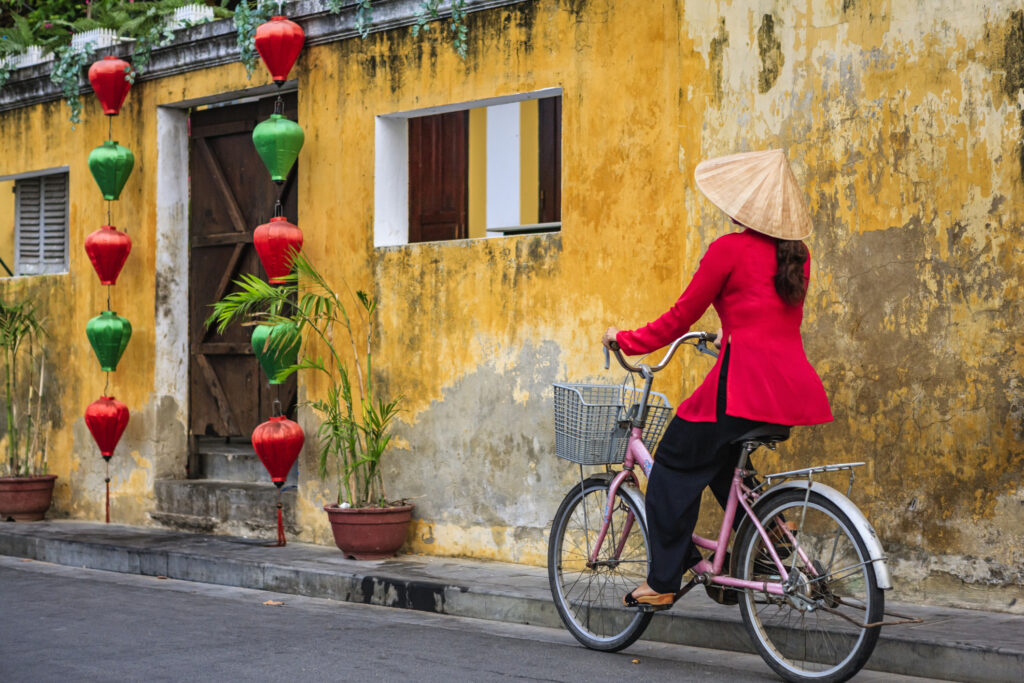Contrary to popular belief, travel to Southeast Asia can be a pleasure at any time of year — especially post-Covid, where there is a noticeable lack of international tourists.
When asking: When is the best time to visit Vietnam and Cambodia? It all depends on what you want from your holiday and what your priorities are. Would you prefer to avoid local crowds if it means having a bit of rain? Then travelling in the wet season may be for you. If you’re a sun worshipper with a beach holiday in mind, you may feel the opposite.
Since there are upsides and downsides to travel in each season, in this post we’ll try to cover the basic need-to-know information for each region. For a quick overview, have a look at our climate graphic to see which regions are experiencing the best weather, and when.
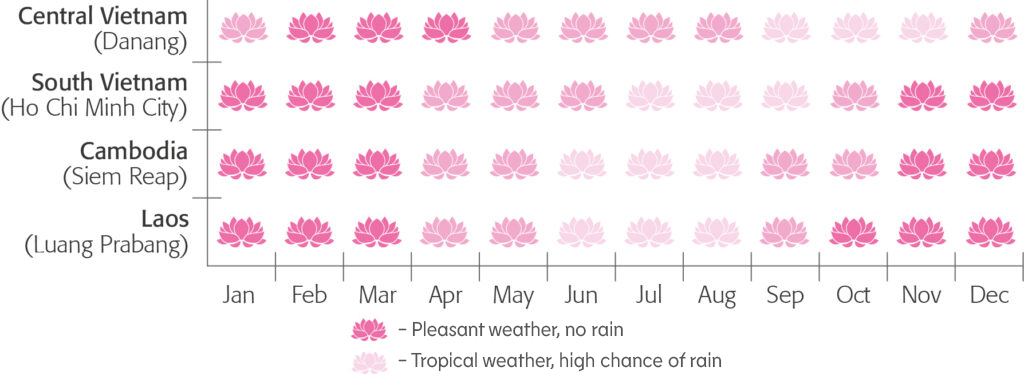
Vietnam
Diverse landscapes, friendly locals and a world of fresh, mouth-watering food. What’s not to love about Vietnam? There are two main aspects to consider when deciding when to go: weather and festivities.
Weather
With its long, thin geography and over 2,000 miles of coastline, Vietnam spans a very wide range of latitudes for its size, meaning that the climate varies quite dramatically between its northern and southern regions. In fact, for the purpose of discussing climate, most people find it helps to divide the country into three separate regions, each with its own weather system. These are: north, central and south.
North Vietnam
- December to February: Winter in North Vietnam. Daytime temperatures under 20°C and in some places below freezing at night. Skies are overcast and drizzle is common.
- March to May: Expect clearer skies and warmer weather, making this a good time of year for trekking. Monsoon rains begin in early May (sometimes as early as April) and temperatures creep up to 30°C. Downpours tend to be shorter and less frequent than in summer months, so this can still be a good time to travel.
- June to August: the summer rains reach their peak, and stormy weather isn’t uncommon. Humidity levels are at their year-round highest, and average daytime temperatures are above 30°C
- Septermber to November: Monsoon rains begin to calm down, with downpours very rare by November and temperatures dropping to a comfortable level. One of the best times of year for trekking in the mountains and cruises on Halong Bay.
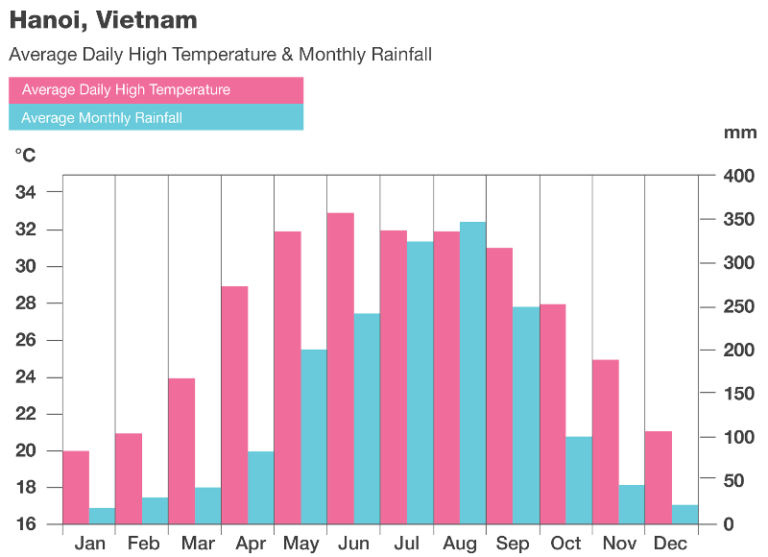
Central Vietnam
- December to February: Winter conditions, but milder than in the North. Temperatures can be over 20°C, but it often feels colder due to abundant clouds, drizzle and onshore winds. T-shirt weather begins towards the end of Feb, if you’re lucky.
- March to May: Perfect conditions for travel. Blue skies, little rain, and warm temperatures (creeping up to 30°C by May).
- June to August: While the rest of the country is entering peak monsoon, Central remains comparatively dry (though humid). Downpours are getting more likely, but skies are mainly blue – making this a good time to hit the beach, if you don’t mind potentially very hot temperatures.
- September to November: The rains finally reach Central Vietnam in September. The monsoon season here is short, but often more intense than in the North and South, so this can be a time to avoid. Typhoons are possible, and Hoi An is prone to flooding.
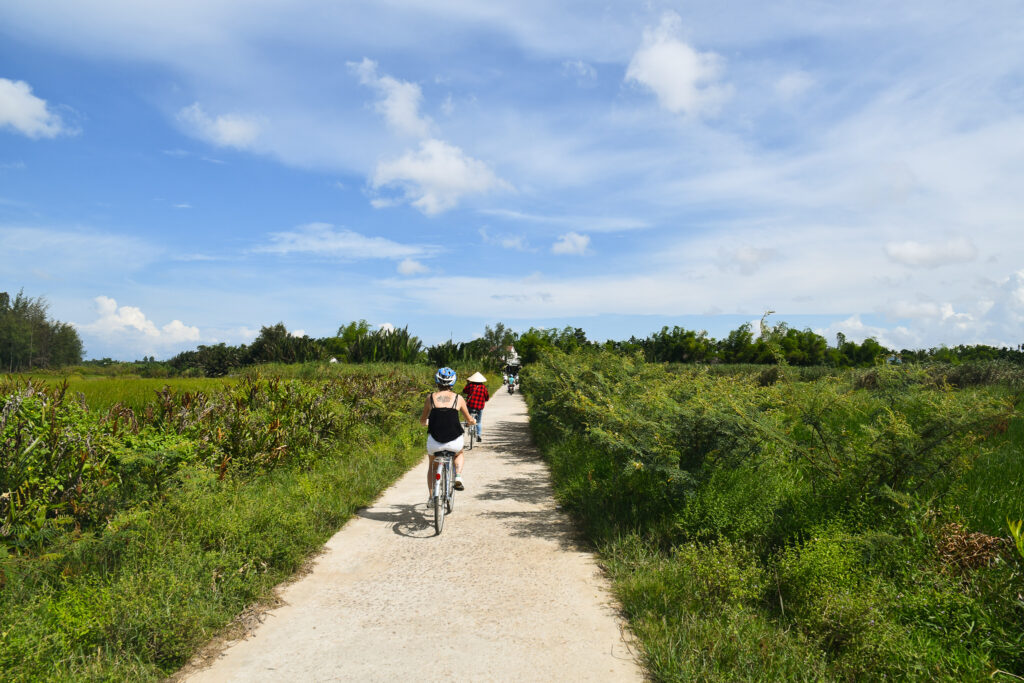
South Vietnam
- December to February: Perfect conditions for travel, with blue skies and temperatures in the low 20s (Celcius). Beach resorts get busy, and it’s a great time for boat trips on the Mekong Delta as water levels are at their highest.
- March to May: Very hot, with high humidity and temperatures typically over 30°C. Things don’t cool down much at night, and there’s little rain to provide relief.
- June to August: Monsoon season is in full swing. Temperatures remain high, but frequent downpours provide some respite. It’s not a great time for sunbathing, but city exploration with fewer crowds and lower prices can be excellent.
- September to November: The rains are still pounding the South, with September typically even wetter than August. By October it’s easing off, and in November the beach is on the cards again as blue skies become much more common.
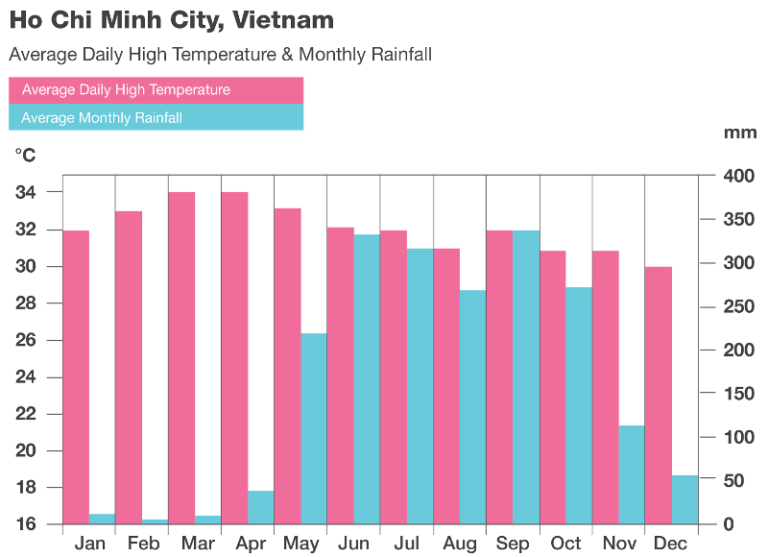
And those festivities?
Vietnam has two main festivals each year: Tet (lunar new year) and Mid-Autumn Festival. Tet is usually at the start of the year, between January and February, and Mid-Autumn festival is usually around September. Both dates change each year depending on the lunar calendar.
Is Tet a good time to visit Vietnam?
Much as it is a special time of the year, we usually advise people to avoid Tet in order to get the most out of the trip.
Guides don’t work during this period, hotels and airports can be jam-packed with domestic travellers, and domestic flights are often overbooked. If you’re completely determined to travel during Tet, we recommend staying at a resort and avoiding domestic travel altogether!
What about Mid-Autumn Festival?
Mid-Autumn festival, on the other hand, is a festival of colours, life and light. Beautiful lamps and decorations, passionate lion dancing fill the streets and seasonal sweets line the tables in cafes and bakeries.
The preparations for this festivity start well in advance, and they are a sight in and of themselves. The lanterns are so popular that Hoi An famously holds a lantern festival every month at full moon. Expect lively crowds during this time of the year, but they are well worth it.
Laos
This landlocked country is arguably one of southeast Asia’s best-kept secrets. There is only one main festival that’s celebrated throughout the whole country, while smaller cities hold local festivals throughout the year. Laos sees far less tourism than its neighbours, so even during festive periods you’re unlikely to find huge crowds at any time of year.
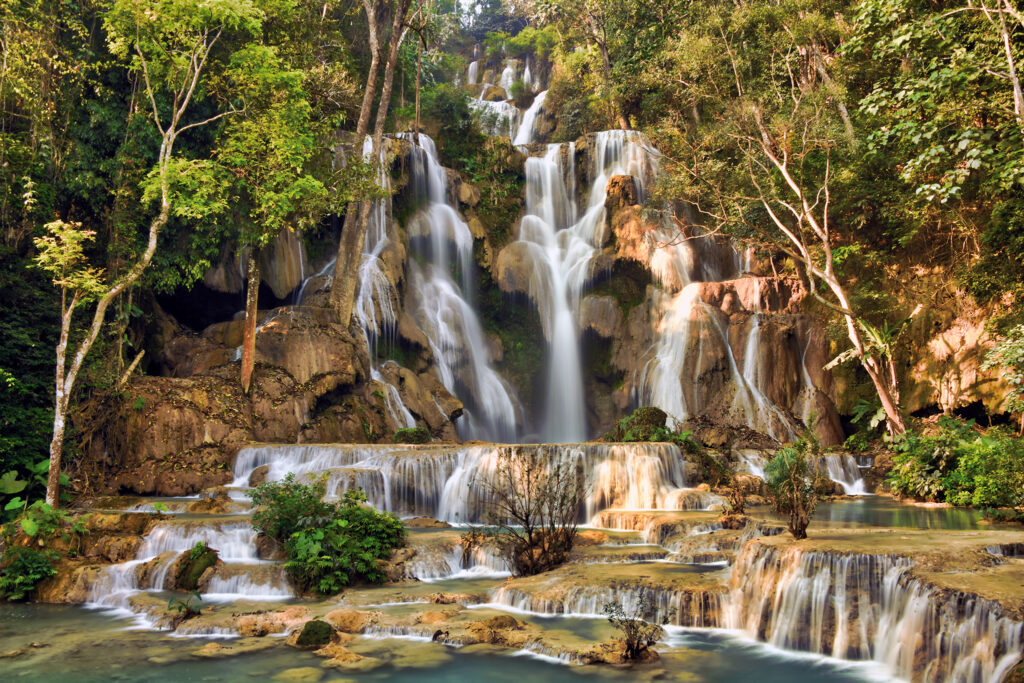
Weather
With no coastline, Laos has a much simpler climate than Vietnam. There are just two distinct seasons which happen at roughly the same time throughout the country: wet (May to September) and dry (October to April).
In general, the northern, central and eastern regions are higher and cooler, while the southern regions around the Mekong River valley are lower and hotter.
- October to April: This is the dry season in Laos. December and January are the “coldest” months, with chilly mornings and daytime temperatures around the high teens (in Luang Prabang). It begins to get hotter in February, and by March and April temperatures reach the low-to-mid 30s.
- We tend to avoid March and April, which can have bad air quality and parched countryside due to slash-and-burn farming practices
- November and December are the best months for a Mekong River cruise, when river levels are at their highest
- May to September: The wet season, or “green” season as we prefer to think of it. Monsoon rains begin in May, peak in July and August and taper off by October. Temperatures and humidity are high, especially in May and June. The landscape is at its loveliest at this time of year, but rural road conditions worsen and it’s not the best conditions for trekking.
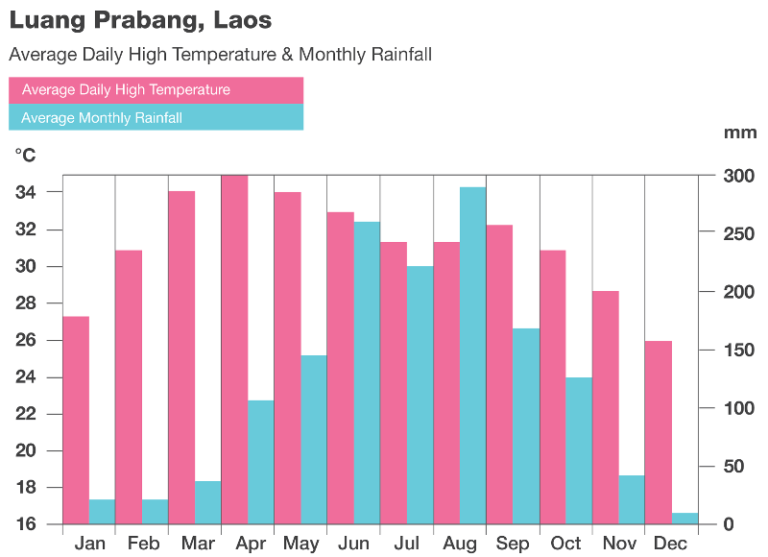
Festivities
Boun Pi Mai (Lao New Year)
This Buddhist celebration falls between the 13/14th and 15/16th of April, much as in countries like Thailand, Cambodia, some parts of Malaysia and even Sri Lanka.
What’s special about it?
It’s a date with significant religious meaning and a time to spend with the family, but what stands out the most for tourists is the widespread water-splashing. All over the country, people haul buckets and containers of all sorts to throw water at one another in a ritual of cleansing and good luck.
Do stores close during Boun Pi Mai?
Some of them, but to a much lesser extent than its neighbouring countries of Vietnam and Cambodia during their respective New Year celebrations. Do keep in mind that domestic travel can get busy during Boun Pi Mai, so if you’re not a big fan of traffic we’d suggest minimising transport during those dates or avoiding the celebrations altogether.
Boun Pi Mai is certainly an experience we would recommend to most travellers, especially families and anyone who wants to get to know more of the genuine Lao spirit.
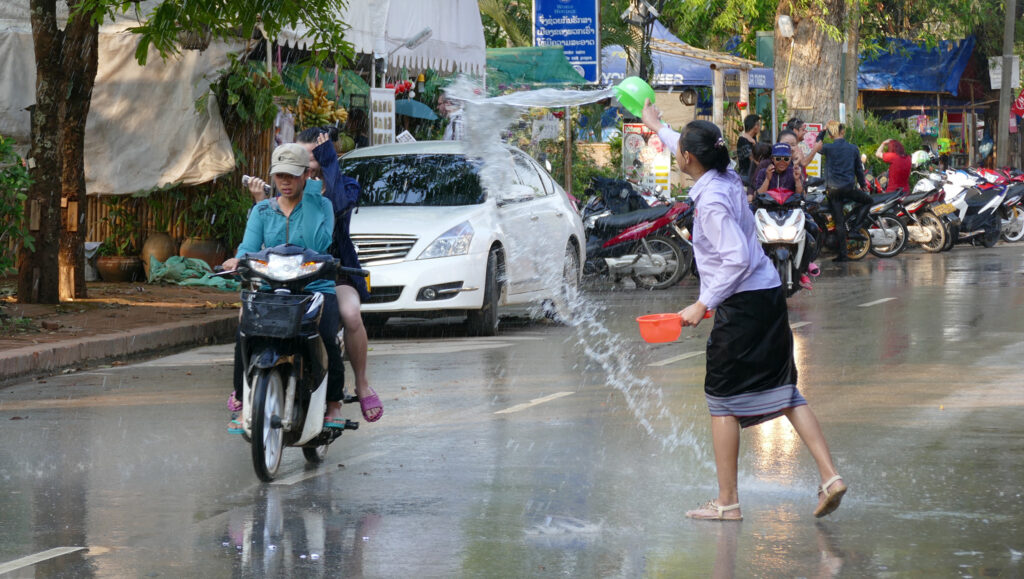
Cambodia
Steeped in deep history, rich in culture and boasting over 400km of coastline, Cambodia is best-known as the home of Angkor Wat, though that is only one of the many reasons we recommend visiting this country.
Weather
Cambodia has one of the simplest weather systems in Southeast Asia, with just two seasons and very little altitudinal variation from region to region.
- November to March: This is the dry season in Cambodia. Little rain, blue skies, and temperatures around 23°C – 32°C in the daytime. Perfect conditions for hiking and outdoor activities, especially earlier in the season when the countryside is greener.
- April to May: Still dry, but very hot. Temperatures soar as high as 40°C, and the landscape is parched and dusty. We don’t generally recommend travel at this time of year, unless you want to get involved in the water-throwing festivities during Khmer New Year.
- June to October: This is Cambodia’s rainy, or “green” season. Despite the name, it actually only rains for a small part of each day – typically an hour or so in the afternoon. Otherwise, it’s generally nice and sunny, and the countryside is at its most picturesque and lush.
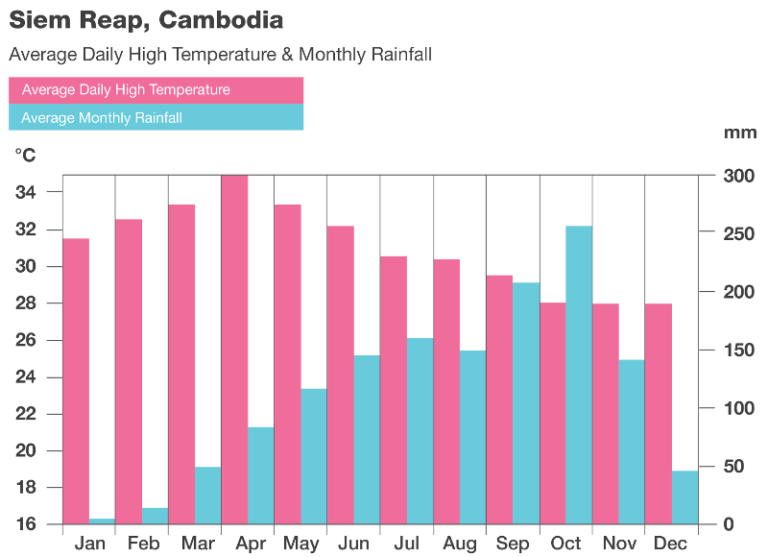
Festivities
Khmer New Year
Cambodia is similar to its neighbour Laos when it comes to celebrations. The most prominent holiday is Khmer New Year, celebrated between the 13/14th and 15/16th of April.
While these dates traditionally celebrate the end to the harvest season, similarly to Laos it shares the water-dousing component. There’s a general party atmosphere, and at the same time a lot of businesses and public monuments are closed during the 3-day period. However, most restaurants are open to catch the holiday trade.
Bon Om Touk
Another date to keep in mind is the water festival, Bon Om Touk. It’s celebrated in late October or November depending on the year (since it follows the lunar calendar), and it commemorates the end of rainy season and the prosperous coming of the dry season.
With the main event being dragon boat racing, there’s a hopeful and festive atmosphere, and there’s plenty of water-dousing too! The festival is celebrated all over the country, but the biggest crowds will be in Phnom Penh, along the river next to the Royal Palace.
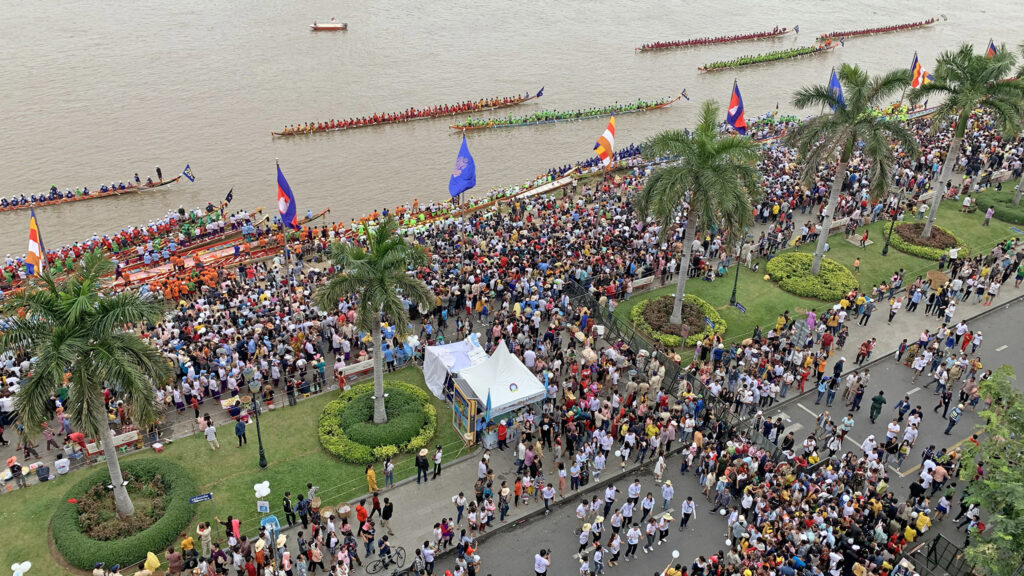
During these dates, domestic travel can get very busy and a lot of shops and sights will be closed, which is something to bear in mind if there are specific museums or landmarks you want to visit (Angkor Wat usually remains open during these dates). If you want to see a spectacle of floating candles, head to Siem Reap for a beautiful show. For the best time to visit Vietnam and Cambodia, align your travel plans with the dry season for pleasant weather, or choose festival periods for a culturally rich experience, depending on your preferences for climate and cultural engagements.
Experience the best of the region on our World Heritage Indochina itinerary. Fancy lengthening your exploration or spending time on the beach? Get in touch with our Indochina experts today to find out how to customise your trip.
